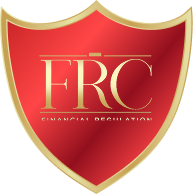Sustainability-linked loans (SLLs) have emerged as a key financial tool in promoting corporate sustainability, aligning financial incentives with environmental, social, and governance (ESG) targets. Unlike traditional loans, which are used for specific projects, SLLs link the loan's financial terms—such as interest rates—to the borrower’s achievement of predefined sustainability goals. Investment banks play a pivotal role in structuring, pricing, and promoting SLLs, driving corporate sustainability efforts across various industries.
This article explores how investment banks facilitate sustainability-linked loans, the process of structuring these loans, and the benefits they offer to both companies and investors.
Sustainability-linked loans are a form of financing where the loan terms are tied to the borrower’s ESG performance. SLLs are unique because they do not restrict the use of funds to specific green or sustainable projects. Instead, borrowers can use the capital for general corporate purposes as long as they meet their agreed sustainability targets.
The financial terms of an SLL—most commonly the interest rate—are directly tied to the borrower’s success in meeting these ESG goals. For instance, if a company achieves its carbon reduction target or improves workforce diversity, it benefits from a lower interest rate. Conversely, failure to meet the targets may result in penalties, such as higher borrowing costs.
Investment banks play a crucial role in the development, structuring, and promotion of sustainability-linked loans. As the financial intermediaries, banks work with corporate clients to integrate ESG criteria into loan agreements and ensure that both lenders and borrowers are aligned with sustainability objectives.
The process of structuring an SLL begins with identifying the ESG metrics that are material to the borrower’s business. Investment banks assist companies in selecting appropriate sustainability performance targets (SPTs), which could include reducing carbon emissions, improving resource efficiency, or achieving social goals like increasing workforce diversity.
Best Practice: Investment banks often collaborate with ESG advisors or third-party sustainability consultants to ensure that the chosen targets are measurable, ambitious, and aligned with global standards, such as the Sustainability Accounting Standards Board (SASB) or the Task Force on Climate-related Financial Disclosures (TCFD).
Once the ESG metrics are defined, the loan terms are structured to incentivise the borrower to meet these targets. This typically involves setting an initial interest rate, which will be adjusted based on the borrower’s performance against their sustainability goals. Investment banks ensure that there is a clear mechanism for monitoring and verifying the borrower’s ESG performance, often through third-party auditing or certification.
The pricing of sustainability-linked loans is more complex than that of traditional loans because it requires a thorough assessment of ESG risks and opportunities. Investment banks must consider how the borrower’s ability to meet their sustainability targets will impact the loan’s risk profile. For example, a company that has a high carbon footprint may face regulatory risks or reputational damage if it fails to meet its emissions reduction goals, which could increase the financial risk for the lender.
Best Practice: Investment banks use a combination of ESG ratings, industry benchmarks, and scenario analysis to assess the borrower’s risk profile. By integrating ESG factors into their risk assessment models, banks can determine the appropriate interest rate for the loan, taking into account both financial and non-financial risks.
One of the key challenges in sustainability-linked loans is ensuring that the borrower’s ESG performance is accurately measured and reported. Investment banks play a central role in establishing robust monitoring and reporting frameworks that ensure transparency and accountability. This may involve working with third-party auditors or sustainability rating agencies to verify the borrower’s progress toward meeting their ESG targets.
Best Practice: Investment banks should ensure that the borrower’s ESG data is reliable, consistent, and comparable. This can be achieved by using internationally recognised reporting frameworks, such as the Global Reporting Initiative (GRI) or the CDP (formerly Carbon Disclosure Project). Regular reporting helps build trust between the borrower and lender and provides clear evidence of progress.
Sustainability-linked loans are designed to align financial incentives with the borrower’s commitment to sustainability. Investment banks help structure loan agreements that reward companies for improving their ESG performance. For example, if a company successfully reduces its carbon emissions by a specified percentage, it may benefit from a lower interest rate. This creates a financial incentive for the company to meet its sustainability goals.
Best Practice: Investment banks should structure SLLs with clear and measurable ESG targets, ensuring that the borrower’s financial incentives are closely linked to their sustainability performance. This alignment encourages companies to prioritise long-term sustainability over short-term financial gains.
Investment banks also play a critical role in promoting sustainability-linked loans to corporate clients. As companies face increasing pressure from investors, regulators, and consumers to improve their ESG performance, SLLs provide an attractive financing option that aligns with their sustainability goals.
Best Practice: Investment banks should educate their corporate clients about the benefits of sustainability-linked loans, including lower borrowing costs, improved corporate reputation, and access to ESG-focused investors. By highlighting the financial and non-financial benefits of SLLs, banks can encourage more companies to adopt these innovative financing solutions.
Sustainability-linked loans offer numerous benefits to both borrowers and lenders, making them a valuable tool in promoting sustainability across industries.
SLLs provide a direct financial incentive for companies to improve their ESG performance. By linking loan terms to sustainability targets, companies are encouraged to adopt more sustainable practices, such as reducing carbon emissions, improving labour practices, or increasing resource efficiency.
Borrowers that meet their ESG targets can benefit from lower interest rates, reducing their cost of capital. This creates a financial incentive for companies to invest in sustainability initiatives that improve their overall business performance.
Companies that successfully meet their sustainability targets through SLLs can enhance their reputation with investors, customers, and regulators. A strong commitment to ESG principles can attract socially conscious investors and improve access to capital markets.
SLLs help companies manage ESG risks by encouraging them to address material sustainability issues, such as climate change, human rights, or governance practices. By addressing these risks, companies can reduce the likelihood of regulatory fines, reputational damage, and operational disruptions.
SLLs are a key driver in the transition to a sustainable economy. By incentivising companies to meet ambitious ESG targets, SLLs help promote the widespread adoption of sustainable business practices across industries.
While sustainability-linked loans offer significant benefits, there are also challenges in structuring these products effectively.
One of the main challenges in structuring SLLs is defining and measuring the borrower’s ESG targets. Companies must ensure that their sustainability goals are measurable, ambitious, and aligned with industry standards. Failure to set clear targets can lead to accusations of greenwashing, where companies claim to be more sustainable than they actually are.
Reliable and transparent ESG data is critical to the success of SLLs. However, many companies struggle to provide accurate and comparable ESG data, particularly in industries where sustainability metrics are less standardised.
Investment banks face reputational risks if they are perceived to be financing companies that are not genuinely committed to sustainability. To mitigate this risk, banks must conduct thorough due diligence and ensure that their corporate clients have credible ESG strategies.
Sustainability-linked loans (SLLs) represent an innovative financing tool that aligns financial incentives with corporate sustainability goals. Investment banks play a pivotal role in structuring, pricing, and promoting these loans, driving sustainability across industries. By helping companies set ambitious ESG targets, monitor performance, and link financial terms to sustainability outcomes, investment banks are helping to create a more sustainable global economy.
Through the Financial Regulation Courses' Professional ESG Advisor Certificate, individuals can gain the expertise needed to support investment banks in structuring and promoting sustainability-linked loans, ensuring that companies meet their ESG goals while benefiting from lower borrowing costs and enhanced investor confidence.
Understand how ESG drives sustainable finance with the ESG Advisor Certification.
Be the first to know about new class launches and announcements.


Financial writer and analyst Ron Finely shows you how to navigate financial markets, manage investments, and build wealth through strategic decision-making.
